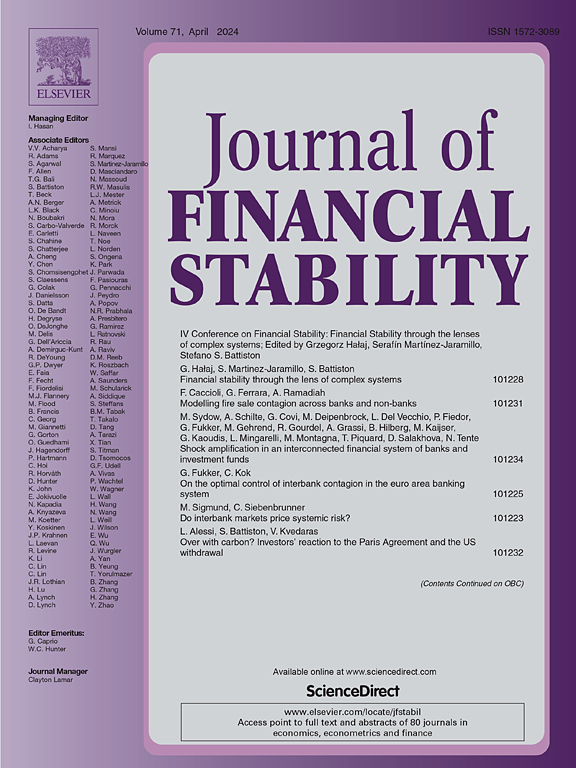Digital currency and banking-sector stability
IF 4.2
2区 经济学
Q1 BUSINESS, FINANCE
引用次数: 0
Abstract
We introduce digital currency into a macro model with a banking sector in which financial frictions generate endogenous systemic risk and instability. In the model, digital currency is fully integrated into the financial system. Stablecoin issuance significantly increases the probability of a banking-sector crisis because it depresses bank deposit spreads, particularly during crises, which limits banks’ ability to recapitalize following losses. While banking-sector stability suffers, household welfare can still improve significantly. Financial frictions nevertheless limit the potential benefits of digital currencies. The optimal level of digital currency could be below what would be issued in a competitive environment. In contrast to stablecoins, which are backed by debt, tokenized deposits backed by traditional bank assets improve welfare without harming financial stability. The scope for welfare gains from stablecoins or tokenized deposits depends on how households value the liquidity services of digital currency relative to traditional deposits and on the cost of issuing stablecoins.
数字货币和银行业稳定
我们将数字货币引入银行部门的宏观模型,其中金融摩擦会产生内生的系统性风险和不稳定性。在该模型中,数字货币完全融入金融体系。稳定币的发行大大增加了银行业发生危机的可能性,因为它压低了银行存款利差,尤其是在危机期间,这限制了银行在亏损后进行资本重组的能力。虽然银行业的稳定性受到影响,但家庭福利仍可以显著改善。然而,金融摩擦限制了数字货币的潜在好处。数字货币的最佳水平可能低于在竞争环境中发行的数字货币。与由债务支持的稳定币相比,由传统银行资产支持的代币化存款在不损害金融稳定的情况下改善了福利。稳定币或代币化存款的福利收益范围取决于家庭如何评估数字货币相对于传统存款的流动性服务,以及发行稳定币的成本。
本文章由计算机程序翻译,如有差异,请以英文原文为准。
求助全文
约1分钟内获得全文
求助全文
来源期刊

Journal of Financial Stability
Multiple-
CiteScore
7.70
自引率
9.30%
发文量
78
审稿时长
34 days
期刊介绍:
The Journal of Financial Stability provides an international forum for rigorous theoretical and empirical macro and micro economic and financial analysis of the causes, management, resolution and preventions of financial crises, including banking, securities market, payments and currency crises. The primary focus is on applied research that would be useful in affecting public policy with respect to financial stability. Thus, the Journal seeks to promote interaction among researchers, policy-makers and practitioners to identify potential risks to financial stability and develop means for preventing, mitigating or managing these risks both within and across countries.
 求助内容:
求助内容: 应助结果提醒方式:
应助结果提醒方式:


